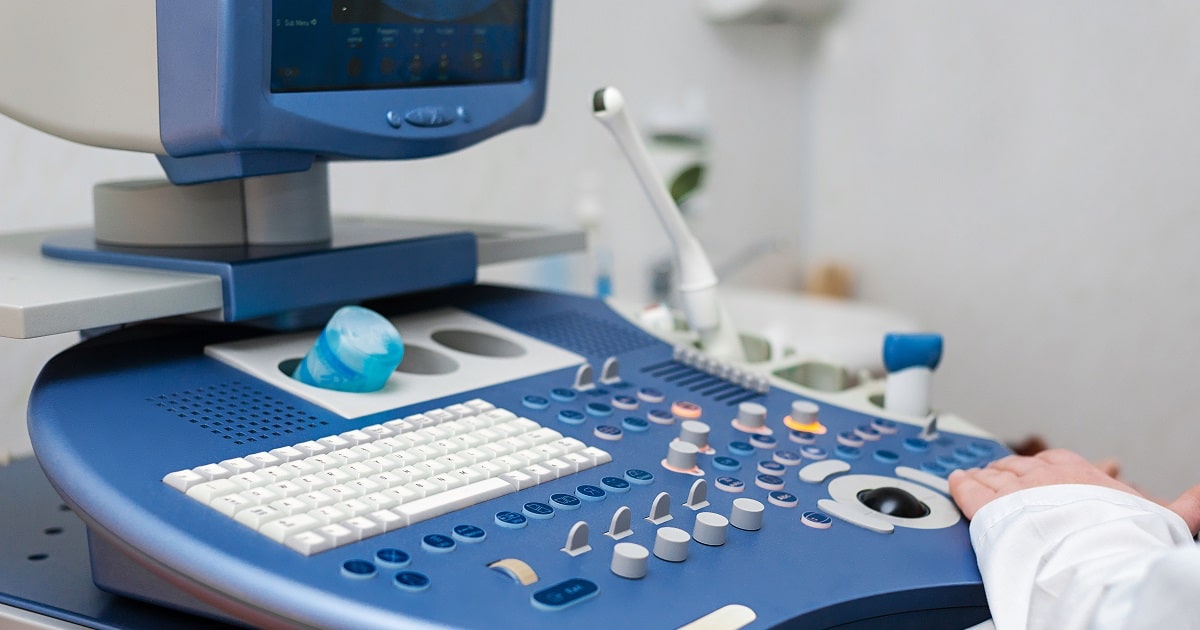
Health Technology, Digital Healthcare
Article | September 8, 2023
The healthcare industry is witnessing an unparalleled phase of expansion and vitality. It is a phase of radical revolution due to the wake of digital transformation. Digital transformation has opened up enormous unique opportunities that were unimaginable until a few years back.
These digital trends are bringing companies and individuals together. Data is the starting point of the digital revolution. These data are then transformed into relationships. Today, including healthcare companies, the success of every company is at stake. In other words, it is how you communicate with customers that matters.
This blog is all about healthcare digital communication, especially healthcare video marketing.
We’ll start by looking at data that demonstrates the power and effectiveness of the video marketing medium. There is nothing equal to the power and efficacy of video marketing in our world today. Then, we’ll look at the video marketing best strategies, healthcare video marketing best practices, and successful examples for healthcare video marketing.
There’s Nothing More Effective than Video Marketing
Here are some numbers that alone demonstrate why video is the most effective marketing medium in the digital age:
More than 5 billion videos are viewed on Youtube every day;
78% of online users watch at least one video every week. And 55% watch one every day;
According to estimates by Cisco, by 2022, 82% of all internet traffic will be generated by video. This percentage was already 72.3% in 2017;
When it comes to video, 55% of people pay more attention than any other type of content;
when viewing a video, the average user retains 95% of the message it contains; this percentage goes down to 10% when we talk about the text;
about 100 million hours of video watched every day on Facebook;
82% of registered Twitter users consume video content constantly;
on Instagram, posts containing video record 38% higher engagement on average than posts containing images;
54% of consumers say they want to see more videos from the brands they follow and support.
Such statistics are compelling for brands, and brands are taking notice. As a result, brands are moving to implement videos as much as possible in their marketing strategies, with excellent results. Two statistics below offer additional proof:
87% of marketing professionals use video in their strategy.
88% of marketers are satisfied with the ROI generated by video marketing campaigns.
This collection of data proves one thing: video is the most effective tool for healthcare digital marketing. And this also applies to the Healthcare sector. It’s even more accurate for this sector, which is intimately involved with consumers as part of their daily lives. Thus, healthcare video marketing is much effective and should be included in your healthcare marketing plan.
Strategies and Best Practices of Healthcare Video Marketing
So, let’s take a closer look at how we can build a video marketing strategy in the Healthcare sector, the fundamental points that must be included, the best practices, and some examples of success.
Start from education
It is often said that we live in the information age. Today, as never before, we have access to all the information we could need in just a few seconds, maybe with just a few taps on our smartphone during a coffee break. Health information is undoubtedly among the most sought-after online. In Italy alone, web searches made on this topic are 4 billion per year, a constantly growing trend.
The downside of all of this is the difficulty of finding your way around this mass of information, which is sometimes complex, misleading, or even untrue. That is why the first task of a company in the Healthcare sector is education. Education is not just a responsibility; and it’s also an opportunity.
In this sense, healthcare videos marketing prove to be the best ally. Healthcare video marketing is a way to provide the consumer with an effortless way to have access to transparent, precise, and authoritative information from your brand. That can be the first step toward establishing a relationship of trust with your brand.
Be clear, but also calm
In this case, let’s start immediately with an exciting and practical example. Targeted toward their younger patients, Miami Children’s Hospital created a healthcare video marketing campaign that explains what happens before, during, and after heart surgery. Understandably, this is a sensitive topic. With this effort of healthcare video marketing, the Miami Children’s Hospital manages to achieve the complex objective of providing clear and authoritative information while at the same time reassuring the viewer.
How?
They make the healthcare video marketing campaign compelling, authoritative, and reassuring by showing the faces of its staff members, demonstrating their professionalism, the environment, the healthcare technologies used, and everything related to the surgery. In this way, the high level of preparation and humanity of the people involved stand out to the viewer.
Learn to be engaging
As we saw above, you have to know how to correctly inform and educate your audience using influential healthcare video marketing trends, all with a calm demeanor. However, it’s also true that success also depends on your ability to excite and involve the viewer for healthcare video marketing in the sector. In short, the keyword is ‘storytelling.
An excellent example is the healthcare video marketing campaign carried out by the dental health department of Bupa UK and addressed to children (but applicable and reachable to adults as well). Through a great use of animations and storytelling, the brand uses the well-known story of the tooth fairy and associates it with childhood memories. This healthcare video marketing campaign has proven to be an excellent vehicle for establishing a truly intimate relationship with the viewer (and, not surprisingly, the video has exceeded 1.3 million views on YouTube).
Another effective way to be direct and engaging is to use influencers in your healthcare video marketing campaigns. An exciting example is the Australian pole vaulter, Amanda Bisk, diagnosed with chronic fatigue syndrome. On her Instagram channel, Bisk talks about her path to fight the disease through fitness, and she has quickly become one of the most famous figures in Healthcare on the platform.
It’s important to note that today, more and more brands target top influencers and micro-influencers. Micro-influencers have a much smaller yet targeted and loyal following of fans. Therefore, their healthcare video marketing messages are perceived by the public as more authentic and personal.
Personalization
94% of marketers believe that personalization is crucial for the future of the business in which it moves. But what do we mean when we talk about personalization?
First of all, it’s not something new: knowing your audience has always been the best way to make a profit, calibrate your communication and your “tone of voice,” and increase engagement and loyalty. But what is the turning point of personalization today?
It is a digital turning point. Today, we all leave traces online at every moment: geolocation, Google searches, preferences on social networks, apps (which in Healthcare are increasingly widespread), and so on. We are talking about a vast amount of data that benefits both companies and consumers from a win-win perspective.
Therefore, it’s a matter of utilizing efficient systems to collect this data, dynamic systems designed with an omnichannel approach in mind. From the collection, the next step is to analyze and interpret this information. Then, you will want to divide your audience into many micro-targets with homogeneous and consistent characteristics to target with tailored communications and offers.
In conclusion, these facts are all the more true in a sector like healthcare that impacts people’s daily lives. The best healthcare video marketing strategy for brands can only be to get closer and closer to customers. That is precisely where specialized companies like us, Media7, come into play. Through compelling B2B healthcare video marketing efforts, we create opportunities for interaction and the possibility to insert custom calls to action.
FREQUENTLY ASKED QUESTIONS
What is a video marketing strategy?
Video marketing strategy is creating, curating, and utilizing videos for marketing products and services of companies to the targeted audience. Marketing teams design the strategy. The idea behind the strategy is to keep the audience engaged with the brand.
Are videos effective for health tech marketing?
Videos are much effective for health tech marketing as people prefer to watch things than reading. Also, people are likely to trust what they see than reading. Videos are the highly impactful medium of marketing for any domain of business, including healthcare.
How to start with healthcare video marketing?
The first step to healthcare video marketing is to define your video marketing strategy. Fix and analyze the target audience to understand the online behavior trends to get an idea about their video engagements and clicks on various social media channels.
Read More

Health Technology, Digital Healthcare
Article | July 14, 2023
COVID-19 has practically given a metaphorical high-voltage jolt to the whole world. It fell like a plague and affected humans in a way that nothing else has since the last global war. In short, it has reminded us of our mortality. As a result, improvement has become the new goal for the wise.
According to Jana Abelovska, Head Pharmacist atClick Pharmacy, “COVID-19 has put the world on notice, especially the healthcare sector. Everything and everyone has seen its effects. But in this turmoil also come opportunities – an opportunity to grow and be better. It is a time of progress to help create a better and healthier tomorrow.”
Read More

Healthtech Security
Article | November 29, 2023
A wealth of evidence supports the health benefits of keeping pets: increased life span, exercise, improved mental health, and a sense of purpose. But for older adults and those with disabilities, the responsibilities and expense of owning an animal can be overwhelming, and caregivers are often forced to take on those burdens themselves. To make matters worse, dementia patients can pose a physical threat to live animals.
What alternate solutions exist for those who cannot safely or practically keep a live pet? Fortunately, information technology and robotics have advanced to the point that realistic, robotic emotional support pets are becoming a legitimate option. As research in this area advances, experts have found that robotic emotional support animals can offer a myriad of benefits similar to those associated with live pets. Robotic companions can also help caregivers.
Robotic Emotional Support Animals in Practice
Imagine the following scenario: An elderly woman with dementia suffering from Sundowner’s Syndrome relies on a strict daily regimen established by her caregiver. This routine is a delicate dance, balancing the patient’s meals, medication, and personal care, all designed to keep her as relaxed as possible.
One afternoon, as the caregiver prepares dinner, the caregiver realizes that the patient’s beloved dog is nowhere to be found. She runs outside to look for the dog, leaving the patient to fend for herself. The patient is agitated over her missing dog and suddenly alone in a kitchen with pots and pans boiling.
Fortunately, the caregiver finds the dog outside, but the patient is now too overwhelmed to eat or take her medication. Despite the caregiver’s best efforts at redirection, it’s a rough evening for everyone.
How a Robotic Emotional Support Animal Can Ease the Role as Caregiver
As any experienced caregiver knows, consistent emotional support for patients is critical. A robotic emotional support animal can significantly ease a caregiver’s role in this respect. Robotic companions replicate many benefits traditional pets provide – affection, responsiveness, and companionship – without the associated caregiving demands, such as feeding walking, or veterinarian visits.
The Benefits of Robotic Emotional Support Animals
The owners of pets are known to enjoy
Reduced impact of depression
Lower blood pressure
Reduced triglycerides and cholesterol
Longer survival rates after a heart attack
30% fewer doctor visits after age 65
Longer life spans
Robotic companion animals provide genuine comfort, mirroring the emotional connection that living pets provide while lightening the caregiver load. Uplifting conversations about the robot companion elevate the moods of both patient and caregiver, potentially reducing feelings of burnout. In embracing such technology, senior care and assisted living facilities can foster an environment that makes staff and residents all smile a little more.
Read More

Health Technology
Article | February 19, 2022
Dialysis providers face many of the same financial and operational pressures that affect other provider organizations, including flat or reduced reimbursements, chronic staffing shortages, and increasingly complex insurance requirements. Dialysis centers, nephrologists, and renal pharmacies also grapple with the impact of a growing shift in dialysis care to the home setting.
End-to-End Automation Can Reduce Denials, Improve Cash Flow
The good news is that despite these challenges, dialysis providers can sustain strong cash flow, reduce costs, and mitigate denials by applying advanced technology to the revenue cycle.
Here are six ways technology can help strengthen the dialysis center revenue cycle in the today’s difficult operating environment:
Identify undisclosed insurance coverage
Because patients often present as self-pay even though coverage exists, determining their true insurance status can be challenging. Yet failure to identify existing insurance can result in significant write-offs.
That’s why renal providers need technology solutions that can uncover patient coverage information before care is provided. Change Healthcare’s Coverage InsightTMsolution provides an expansive network and search-and-matching capabilities necessary to identify and confirm patient coverages at the outset of care.
The solution uses machine learning algorithms—coupled with access to vast stores of available third-party-data—to develop robust patient profiles, which can then be linked to potential funding sources. Notably, it identifies a variety of indicators, including high probability of disability, income levels and financial status, insurance sources, and other actionable information to help you verify coverage and recover revenue.
We can help identify undisclosed coverage for end-stage renal disease (ESRD) patients through Medicare/Medicaid, Disability/SSI, third-party liability, commercial insurance, state and county programs, social programs, and charity.
Expedite seamless prior authorizations
Streamlining the prior authorization process is essential to help ensure optimal reimbursement for renal care rendered, particularly with commercial insurance and Medicare. But traditional prior authorization processes are frequently time-consuming and labor-intensive and can delay necessary care.
Our Clearance Authorization software addresses the chronic problem of prior authorizations with automated functionality that can determine if prior authorization is required and on file with the payer. The solution also will automatically check medical necessity requirements at the time of registration and electronically submit requests to integrated payers.
Change Healthcare’s Connected Authorization Services go a step further by deploying pre-authorization experts to handle routine authorizations quickly using intelligent technology while working complex cases by exception to improve authorization efficiency and accuracy.
Speed adjudication with electronic attachments
As claims management processes have grown more numerous and complex, providers have struggled to ensure that the correct information is provided to the payer at the appropriate time. The result can be delayed, denied, or rejected claims.
Assurance Attach AssistTMcontributes to faster reimbursement and reductions in denials, organizational expense, and administrative burden by automating the attachments process to meet payers’ increased demands for additional documentation. Attachments are automatically delivered and matched to the appropriate claim, and once the claim is released, claim and attachment status can be easily tracked.
Expedite claims workflow for recurring services
Creating claims for ongoing ESRD care requires repeatedly documenting the same details on each claim. Revenue Performance Advisor, an end-to-end medical billing platform, provides automation that allows dialysis staff to save time by quickly replicating unchanged data from prior visits while updating date-of-service and other information to expedite claims processing.
Revenue Performance Advisor also includes eligibility and benefits verification and automated claims scrubbing that flags incomplete or incorrect claims prior to submission, resulting in a first-pass clean claim rate of 98%.
Accelerate your Medicare claim cash flow
Medicare is one of the largest payers of dialysis services, so ensuring a problem-free and expedited Medicare claims submission process is essential to strong cash flow.
Our Assurance Medicare Direct EntryTMsolution provides a single system for the real-time submission and processing of Medicare claims. It can help expedite reimbursement, reduce AR days, and speed your Medicare primary claim cash flow by at least one full business day.
Assurance Medicare Direct Entry also checks your Medicare claims for eligibility errors using the CMS eligibility transaction system (HETS). Claims needing attention are flagged and posted in Assurance Reimbursement Management for editing. You can quickly correct errors within the system before transmitting the claim directly to Medicare for validation and payment processing.
Optimize patient liability
Making it easy for patients to receive, understand, and pay their portion of the medical bill is key to ensuring a healthy revenue cycle, mitigating the need for collection services, and improving patient goodwill.
With our Patient Billing and Statements solution, Change Healthcare serves as your strategic communications partner, delivering multi-channel, personalized print and digital statements to help expedite patient payment collection.
The solution is designed to provide fast, effective statement and invoice processing, printing, and mailing—cutting your costs and getting you paid sooner. Our advanced statement printing allows you to bypass conventional and time-consuming folding, stuffing, and stamping.
SmartPayTMconsolidates each step of the billing and payment process into one place, enabling you to collect more patient payments, get paid faster, reduce your collection costs, and lower patient write-offs. With multiple payment channels, including online, mobile, telephone and via mail, SmartPay helps expedite patient payments before, during, and after the encounter.
A single, trusted partner
Change Healthcare’s deep knowledge of the renal care landscape and our development of disruptive technologies to overcome traditional revenue cycle barriers can help dialysis centers achieve unprecedented revenue cycle excellence.
And unlike many point solutions that only address a specific revenue cycle issue, Change Healthcare’s technologies are part of a comprehensive approach delivered through a single, trusted vendor. That translates into improved process integration and continuity, as well as simpler overall accountability.
Read More